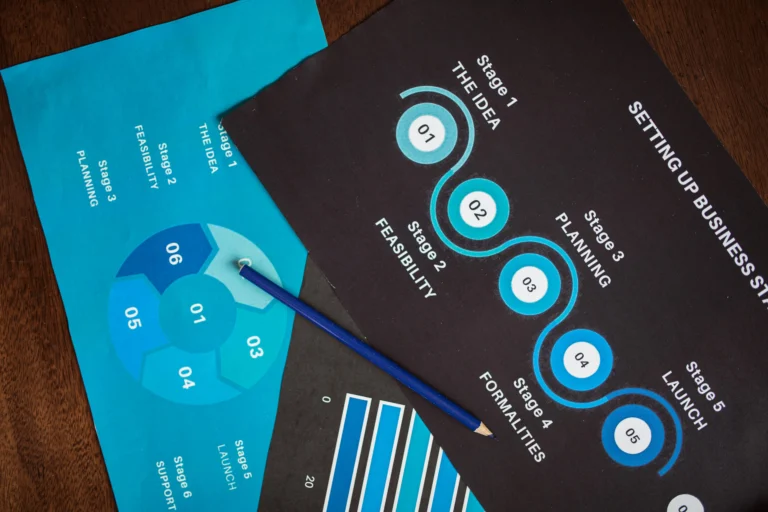Job Insurance Guide: Keep Your Rent and Loans Paid
The call came on a Tuesday. Hours later, the email hit, position eliminated. Rent is due next week, the car note next, and the card balance keeps ticking. It feels like the floor just moved.
Job insurance, also called private unemployment insurance or job loss insurance, steps in here. If you lose work for reasons like layoffs or a company closure, it can send you a set payment each month. That money helps cover rent, loans, and key bills while you search.
This is not the same as state unemployment. Government aid is funded by taxes and has limits. Job insurance is a policy you buy, meant to fill the gap and cut stress when income stops.
In this guide, you’ll see what it covers, how it works, and who qualifies. We’ll touch on costs, common limits, and how to pick coverage in 2025 so your bills stay paid when work does not.
Understanding the Basics of Job Insurance
Job insurance is simple at its core. You buy a private policy that kicks in if you lose your job for reasons outside your control. It sends money to cover specific bills for a short window, often 3 to 6 months. Think of it as a shield for key payments, not a full paycheck replacement.

Photo by Nataliya Vaitkevich
You might see it called payment protection, job loss insurance, or private unemployment insurance. The money usually goes toward a named debt, like your mortgage or auto loan. Expect a waiting period, often 14 to 60 days, before benefits start, and a cap on monthly payout tied to your income or loan balance.
A quick example makes it real:
- You lose your job in a layoff. After a 30-day wait, your policy pays your $1,400 rent for 4 months.
- Your credit card protection plan covers the $200 minimum for 3 months while you apply for roles.
- A mortgage payment policy covers principal and interest up to $2,000 per month for 6 months.
How Job Insurance Differs from Standard Unemployment Benefits
Job insurance focuses on bills, not broad income. It targets payments like rent, mortgage, car loans, or credit cards. State unemployment benefits send cash to you to replace part of your lost wages.
Both usually require involuntary job loss. Layoffs, company closure, or a reduction in force often qualify. Quitting without good cause rarely does. The rules part ways after that. Job insurance is a private product with its own terms. Unemployment insurance is a state program with set eligibility and weekly benefit rules, funded by payroll taxes. You can review how state programs work in this official Unemployment Insurance fact sheet.
Key differences to weigh:
- Purpose: Job insurance pays named debts, unemployment benefits pay you.
- Source: Job insurance comes from insurers or lenders as an add-on. Unemployment benefits come from your state.
- Duration: Job insurance often lasts 3 to 6 months. State benefits can run longer, but amounts vary by state.
- Eligibility checks: Job insurance may require recent full-time employment and a clean payment history on the covered loan. State benefits look at prior earnings and work history, as explained by Investopedia’s guide to unemployment insurance.
Using both offers strong protection. Unemployment helps with groceries, gas, and utilities. Job insurance keeps your rent or loan current so late fees and credit damage do not snowball.
Common Types of Job Insurance Policies Available Today
There is no one-size plan. Policies target different bills and risks. Read the summary of benefits, then the exclusions, before you enroll.
Common options:
- Credit card protection plans: Covers the minimum due if you lose your job. Often sold by the card issuer. Watch for waiting periods and benefit caps.
- Mortgage payment insurance: Pays the mortgage up to a set monthly limit for a short term. Some include a small lump sum to cover escrow.
- Auto loan protection: Pays your car note for several months. May include total disability coverage in the same plan.
- Rent protection: Newer policies pay your monthly rent to your landlord or to you, based on proof of unemployment.
- Standalone income protection: Pays a fixed monthly benefit to you, not tied to a single debt. Useful if your bills are split across rent, utilities, and loans.
What to check before you buy:
- Qualifying events: Involuntary job loss only. Seasonal layoffs or quitting usually do not count.
- Employment history: Many require a minimum number of hours per week and months on the job.
- Self-employment: Often excluded or handled with stricter proof. Contractors may need special plans.
- Waiting period: Benefits start after a set number of days without work.
- Benefit limits: Monthly caps and a total maximum. Some base the payout on a percentage of your income.
- Preexisting defaults: Late or missed payments before the claim can void coverage.
If your bank or lender offers an add-on, compare it with a standalone policy. Price, claim speed, and exclusions matter. The right setup pairs a focused policy for a big bill, like a mortgage, with state unemployment cash for daily life.
Who Benefits Most from Job Insurance and Why

Photo by Ron Lach
Job insurance shines when a paycheck keeps your home, car, and credit afloat. In 2025, the unemployment rate has hovered near the low 4 percent range, yet layoffs still hit pockets of retail and tech. A small rise in job cuts can ripple fast when you carry rent, loans, and childcare. If a few missed checks would push you behind, this coverage buys time and calm. It keeps core bills paid while you focus on interviews, not on late fees.
People who see the most value:
- Families with large fixed bills: Mortgage, car loans, daycare, and student debt leave little room for surprise.
- Single parents: One income means one point of failure. A short safety net matters more.
- Workers in unstable sectors: Retail shifts, tech restructuring, and media cuts can come with little warning.
- New homeowners or recent borrowers: Early years carry tight budgets and higher payment pressure.
- Mid-career pros: Higher expenses and longer searches make steady bill coverage critical.
For a quick pulse on preparing your finances for job loss, review these practical steps on maintaining health coverage, tapping benefits, and getting paperwork in order from Edelman Financial Engines’ guide to preparing for a job loss.
Signs Your Job Might Need This Extra Protection
If one or more of these red flags feel familiar, it is time to consider coverage. Use them as prompts for a quick self-check.
- Company cost cutting: Hiring freezes, travel bans, or a quiet budget cycle often lead to trims.
- Downsizing news: Reorgs, team merges, or talk of “right-sizing” set the stage for layoffs.
- Unstable industry: Retail store closures, tech hiring pauses, or media ad slumps raise risk.
- Automation on the floor: A manufacturing worker sees new robots added to a line that used to need three people. Your role may be next.
- Project revenue dips: Sales slow, renewals stall, and leaders push for “efficiency.”
- Short runway startups: Fundraising delays or flat growth can force sudden cuts.
- Role overlap: Two people doing one job after a merger points to future consolidation.
- High personal exposure: You carry high debt, variable income bonuses, or single-earner pressure.
- Thin savings: Less than three months of expenses saved makes a layoff much harder to absorb.
How to evaluate your fit in minutes:
- List your must-pay bills: rent or mortgage, auto, student loans, childcare, insurance.
- Add them up for one month, then for three months.
- Check your emergency fund. Can it cover that total without stress?
- If the gap is large, price a policy that targets your biggest bill first, like rent or mortgage.
If you want a quick read on why many households are shoring up protections in 2025, this overview on job loss insurance amid economic uncertainty offers timely context: economic uncertainty and job loss insurance in 2025.
The goal is simple: keep the roof, protect your credit, and stay focused. Job insurance is not about fear. It is about buying time so you can choose your next move with a clear head.
Steps to Get and Use Job Insurance Effectively
A tight plan beats panic. Treat job insurance like a seatbelt for your biggest bills. You set it up now, then hope you never need it. If you do, it snaps into place and buys you time to make your next move.

Photo by Kampus Production
Start with a simple process that keeps you focused and avoids surprises.
- Map your bills and check for built-ins
- List rent or mortgage, auto, student loans, and key cards.
- Review each loan or card for existing protection. Some lenders sell add-ons you may already have.
- Note coverage gaps. Prioritize the bill that would hurt most if missed.
- Shop smart, then price the policy
- Look at bank add-ons, standalone insurers, and employer marketplace options.
- Compare costs near 1 to 2 percent of the covered amount per month. For example, $1,500 of rent coverage might cost $15 to $30 monthly.
- Keep an eye on trends. Broader insurance costs have climbed, which makes comparison shopping more important than ever, as shown in this overview of 2025 employer health insurance costs.
- Match coverage to your risk
- Choose the benefit amount tied to one big bill, like rent or mortgage.
- Pick a duration that fits your field’s average job search time. Three to six months is common.
- Confirm the waiting period. A 30-day wait is typical before payments start.
- Apply with clean paperwork
- Have proof of income, recent pay stubs, and employment start date.
- Provide loan or lease details for targeted coverage.
- Confirm you meet minimum work history, usually full-time hours for several months.
- Know the claim steps before you buy
- If laid off, notify your provider quickly, often within 30 days.
- Submit the termination letter, unemployment claim confirmation, and any required forms.
- Track the waiting period. Payments usually start after it passes.
- Benefits often go directly to your lender or landlord. Some pay you.
- Avoid common pitfalls that stall benefits
- Do not miss premiums. A lapse can void a claim.
- Watch the waiting period and pre-claim blackout rules.
- Do not assume quitting is covered. Voluntary resignations are usually excluded.
- Keep your loan current before a claim. Prior delinquencies can block payment.
- Maximize value over time
- Update coverage each year as rent or loans change.
- Align policy duration with your industry and savings level.
- Set reminders for renewal dates and benefit caps.
- Keep a file with copies of your policy, addendums, and claim forms.
Example:
- You cover a $1,400 rent for six months with a 30-day wait.
- Layoff hits. You file within a week, send HR’s letter and your unemployment receipt.
- After one month, your policy pays the landlord each cycle, up to six months, while you job hunt.
What to Watch for in Costs and Fine Print
Small words in the policy can carry a lot of weight. Read every line that controls when and how money moves.
- Premium range: Many plans price near 1 to 2 percent of the covered amount per month. Low teaser rates often rise at renewal. Check the rate guarantee period in writing.
- Fees and caps: Look for admin fees, claim service fees, monthly benefit caps, and a total maximum payout. Verify if benefits reduce after several months.
- Waiting period: Commonly 14 to 60 days. A longer wait lowers cost but delays help. Pick a wait that your savings can carry.
- Benefit duration: Three to six months is typical. Some add a lump sum at the start. Confirm whether partial months are prorated.
- Eligibility rules: Expect minimum employment history, full-time status, and a recent clean payment record on the covered loan. Contractors and gig workers may face extra proof requirements.
- Exclusions: Voluntary quit, resignation in lieu of termination, fired for misconduct, seasonal or temp roles ending as scheduled, strikes, and pre-announced layoffs often do not qualify. Company closures and reductions in force usually qualify.
- Coordination with other benefits: If you receive state unemployment or severance, some insurers offset your benefit. Ask how offsets work in real dollars.
- Claim deadlines: Missed notice windows can void claims. Mark them on your calendar on day one.
Quick comparison snapshot:
| Item | Typical Range or Note |
|---|---|
| Premium | About 1–2% of the covered amount monthly |
| Waiting Period | 14–60 days |
| Benefit Duration | 3–6 months |
| Monthly Cap | Tied to rent, mortgage, or income percent |
| Common Exclusions | Voluntary quit, misconduct, planned temp end |
Where to compare:
- Use your bank or lender’s add-on as a price anchor, then check at least two standalone providers.
- Review consumer forums and state insurance department complaint databases for claim issues.
- Scan reputable financial education sites for policy checklists and buyer tips. Rising household insurance costs make these comparisons more valuable, as noted in this discussion of job-based health insurance cost pressures.
Read the summary of benefits, then the exclusions, and then the claim section. Highlight anything that controls eligibility or timing. A 10-minute review now can save months of stress later.
Conclusion
Job insurance bridges the gap when paychecks stop, keeping rent, mortgage, and car notes current while you search. It pairs well with state unemployment, covers a set amount for a short window, and helps you avoid late fees and credit damage.
Act now. Audit your must-pay bills, price coverage that targets the biggest one, and compare a lender add-on with a standalone policy. If you want a second opinion, speak with a licensed advisor who can match benefit amounts, waiting periods, and duration to your risk.
Share your experience with job loss insurance in the comments to help others weigh their options. Secure the basics today, regain control, and move toward your next role with a clear head.







